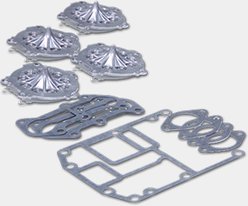Stephen Neil, of Franklin, Tennessee, spent two summers fishing and guiding in Elfin Cove, Alaska. During that time, he filleted hundreds of pounds of fish for clients daily and became quite proficient at the process. Neil was kind enough to offer a series of in-depth insights on filleting fish, including how to do it using an electric fillet knife. For a video of the process, click here.
An electric fillet knife can make cleaning a big catch of fish a lot easier, particularly when cleaning smaller fish. For instance, when I’m cleaning panfish, I’m often cleaning 30 to 50 fish per trip. In that case, I’ll choose an electric knife.
For me, an electric knife is definitely a time saver, as I can clean each panfish in about 45 to 60 seconds.
The Process
Cleaning fish with an electric knife isn’t too much different than doing the job with a fixed-blade knife, but there are a couple of key changes. Here’s the process:
- Make a straight-down cut across the fillet behind the fish’s gill, making sure to go all the way to the fish's backbone.
- Keep the knife at about a 20-degree angle above horizontal and cut along the side of the fish to remove the fillet. Cut right through the ribs and stop when the knife is about 1/4 inch from the tail.
- Using the last 1/4 inch as a “hinge,” flip the fillet over so the skin is on the table. Now fillet the meat off the skin, keeping the knife blade at the same 20-degree angle above horizontal.
- The rib section will remain on the fillet. The easiest way to remove it is with a fixed-blade knife. Simply cut around the rib section and the fillet is complete.
- Turn the fish over and repeat these steps for the other fillet.
- Wash each fillet in cold water and check for any remaining bones or scales, which should be removed prior to cooking or storage.
Getting Others Involved
Removing the rib section of the fillet is an important step in the process, and having a helper to do it can save a lot of time. It’s also a great step for a beginner who wants to be involved in the process. When I was a kid learning to fillet fish, this was one of my responsibilities. Before that, the first jobs my dad gave me were to wash the fillets, check for bones and scale fish – until I was ready to handle a knife.
I’m excited for my kids to get to 8 or 9 years of age, when they should be able to help with this process, too. Right now, they’re big helpers in a lot of ways.
Practice Makes Perfect
The more fish you clean, the better you’ll get. Depending on whether you’re left- or right-handed, you might find that one side of the fish is easier to fillet. You might need to adjust your technique a little or experiment with which side you fillet first, to make the job just a little easier. But ultimately, it just takes time and practice.
The videos in this series should be a big help as you get started. Watch them before you clean fish, and then watch them again afterward to refresh. Even if you struggle a bit at first, take pride in the fact that you’re cleaning fish, involving others and putting delicious food on the table.
Feel free to follow me on Facebook and Twitter to share questions and comments.
Read more of Stephen's blogs: How to Fillet Fish with a Fixed-Blade Knife, How to Get Started Fishing with Kids and Filleting Fish with a Fixed-Blade Knife vs. an Electric Knife
























